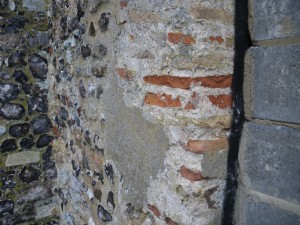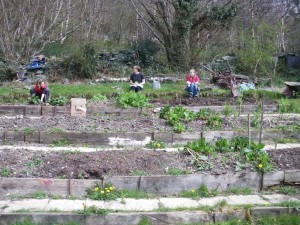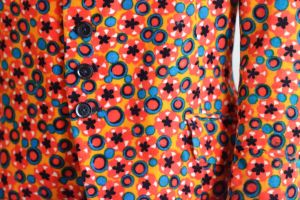 When the Handel House Museum in Mayfair announced back at the beginning of the summer that they were opening up one of Jimi Hendrix’s London flats to visitors for a short period, I was excited enough to buy a ticket on the morning they went on sale. They weren’t quite that sought after but I did feel disgracefully smug when overhearing numerous people being informed at the desk that they could visit the exhibition but the tickets for the flat had sold out weeks ago.
When the Handel House Museum in Mayfair announced back at the beginning of the summer that they were opening up one of Jimi Hendrix’s London flats to visitors for a short period, I was excited enough to buy a ticket on the morning they went on sale. They weren’t quite that sought after but I did feel disgracefully smug when overhearing numerous people being informed at the desk that they could visit the exhibition but the tickets for the flat had sold out weeks ago.
The composer George Handel lived at what is now 25 Brook Street for 36 years in the early 18th century and composed many of his major works there, including Messiah. When Hendrix’s girlfriend Kathy Etchingham was looking for a place for them in the summer of 1968, the one she found was an attic flat on two levels at 23 Brook Street. For a while they thought they were in Handel’s house, the blue plaque being rather ambiguously located, and Jimi even bought some of his music to get a feel for his neighbour. Both houses are now part of the Handel House Museum with number 23 providing extra exhibition space and, in the case of Jimi’s flat, administration offices.
The first thing that strikes you are the steep and narrow stairs to get up to the flat – apparently a few of Jimi’s visitors returning after a night out came something of a cropper on them. The second, and main, thing that strikes you is how small the flat is. The larger room overlooks Brook Street and is a reasonable size but had to accommodate a double bed (which seemed to be the main piece of furniture rather than solely for sleeping), a TV and hi-fi (there weren’t really any adjacent neighbours, one of the attractions of the flat in the first place, since 23 was one end of the row and 25 didn’t have an equivalent attic extension) and various other items, more decorative than practical in many cases. The second room is much smaller and according to a (now disappeared) forum source was used for band jams. The top half of the flat, up even more perilous steps, wasn’t available to visit and has been extensively changed since the 1960s but would have housed the kitchen, bathroom and even smaller spare bedroom which was reputedly used by George Harrison on occasion.
The rooms are mostly empty, with just a small display case in the bigger room containing an ornate brass perpetual calendar – ironically only for the years 1954 to 2003 – and a glass ashtray, both of which were in the flat when Jimi lived there. On the walls of that room are also photos taken in the flat, including the one featured on the cover of the programme. But what really brings the place alive are Kathy Etchingham’s various recollections of their times there – visiting John Lewis to buy fabrics; having a late breakfast at the Indian Tea House across the street on the corner of South Molton Street; drinking milky tea and watching TV together, one of Jimi’s private pleasures being Coronation Street with Ena Sharples being his favourite character.
The smaller room just has a TV screen showing an interview with the Experience in the flat on January 7th 1969 for the CBC programme Through The Eyes Of Tomorrow (samizdat video of the interview playing in the flat, or here’s the full interview). During the interview, Jimi is sprawled on the bed in the main room with the glass ashtray visible and in use, while Noel and Mitch are interviewed together on the floor in front of the fireplace in the second room. The beginning of the end. :)
The flat didn’t have a doorbell at ground level so it really was a private retreat and, although it’s thought Jimi might have spent as little as sixty nights there, you believe Kathy when she reports Jimi saying it was his first (and as it turned out, only) real home of his own. The things in the exhibition downstairs are great, but the space he occupied – given just enough context by the exhibits – is actually much more evocative of the life he was leading.
The flat visits have now ended but the exhibition (more of which later, hopefully) is open through to November 7th 2010. The Handel House Museum would like to make the Hendrix exhibition, including presumably the flat, a permanent fixture but as ever the stumbling block may be finding the funding.
 The box. The wheel was supplied by alpacaspinner.co.uk and safely delivered by Parcelforce.
The box. The wheel was supplied by alpacaspinner.co.uk and safely delivered by Parcelforce.
 The “Urban Homestead” is a phrase that goes back to the 1970s and has become a common phrase in the US for describing a home which is aiming for self sufficiency and self reliance. It has a lot in common with the Permaculture and Transition movements, at the very least sharing some goals and techniques.
The “Urban Homestead” is a phrase that goes back to the 1970s and has become a common phrase in the US for describing a home which is aiming for self sufficiency and self reliance. It has a lot in common with the Permaculture and Transition movements, at the very least sharing some goals and techniques. Inspired by
Inspired by  There are two star exhibits. One is the
There are two star exhibits. One is the 

